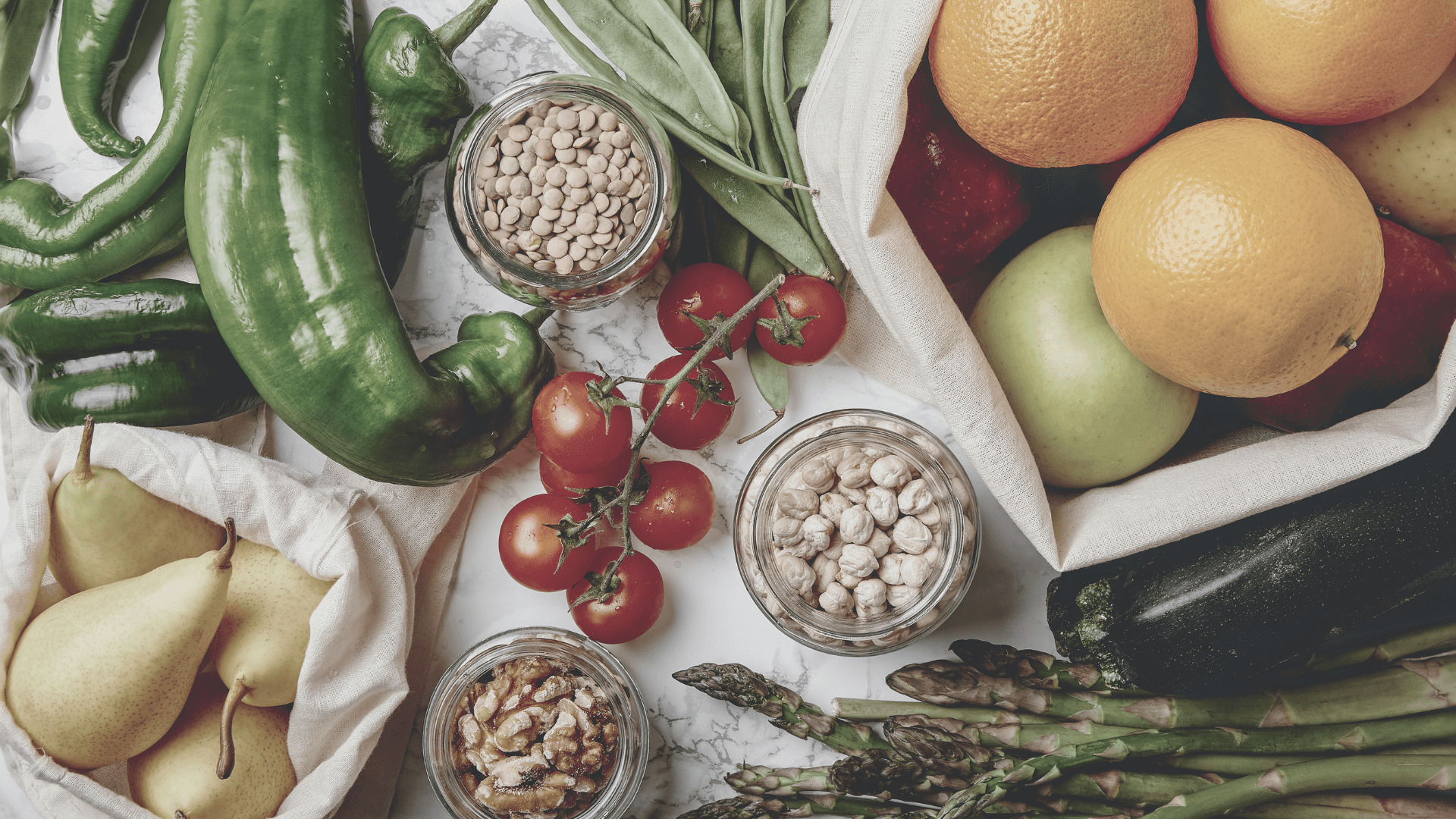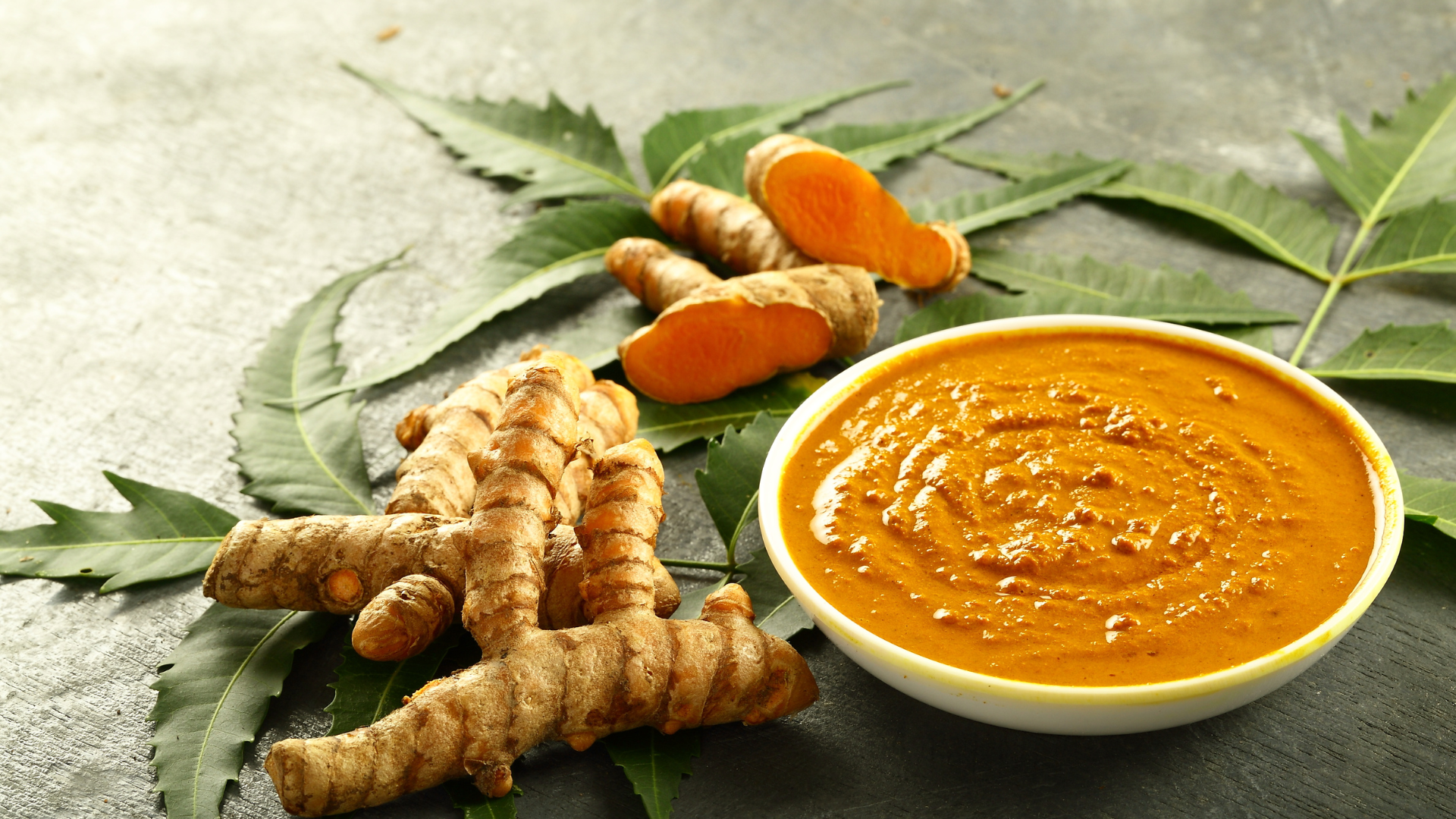Did you know that lactose is just a milk sugar?
It’s true.
Now, you’re clearly no stranger to lactose.
In fact, I’m guessing that if you’re reading this you might have been told at one point or another,
You’re lactose intolerant.
Yes?
But what exactly is lactose? And why is it hard to digest? Or is it?!
Milk Sugar
Click HERE to save this post for later.
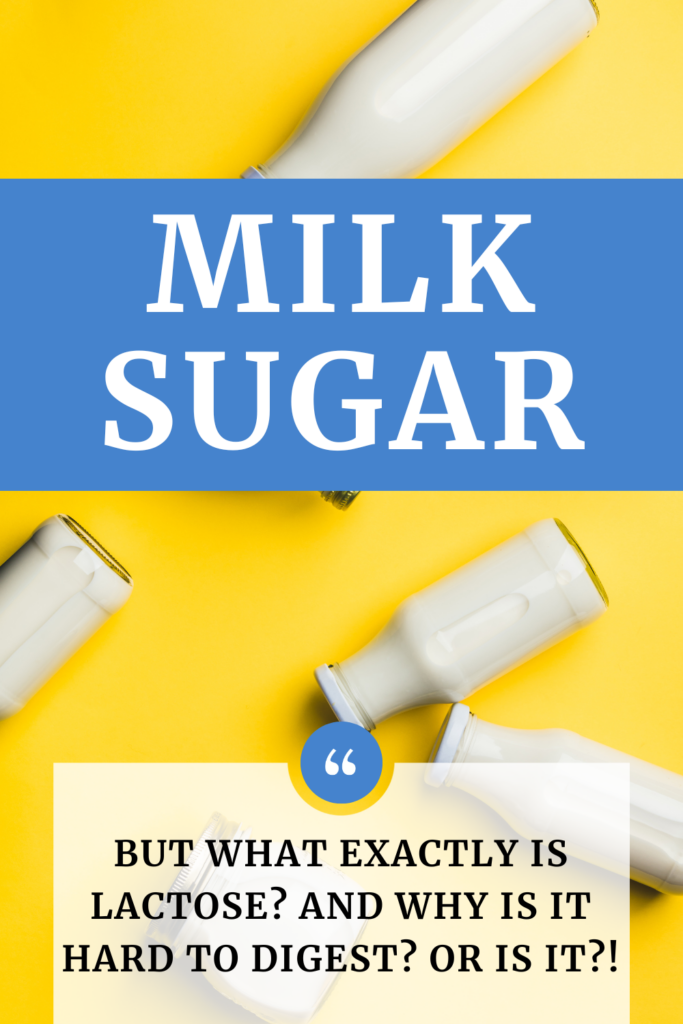
Lactose is a milk sugar. Huh?!
Yes, lactose is the sugar component of milk.
To better understand the milk sugar lactose, let’s break it down.
Lactose Structure
This is what the lactose structure looks like:
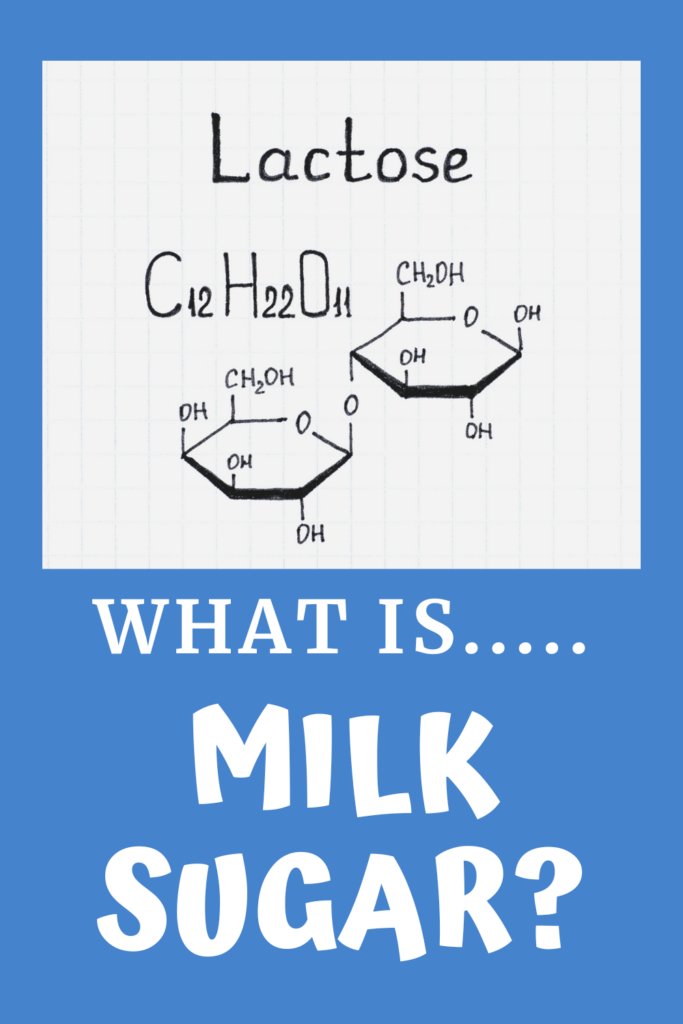
Is Lactose a Disaccharide
The structure above is a disaccharide, which consist of two monosaccharides.
In fact, I have done an entire series on A Gutsy Girl all about saccharides.
A disaccharide is a chain which consists of two “rings.”
Depending on the disaccharide, each of the two rings consists of something different.
For example, sucrose is glucose + fructose. Maltose is glucose + glucose.
So what about lactose?
Lactose is galactose + glucose.
Seems fairly simple, right? Just two compounds.
So then why do so many people have problems digesting lactose?
The enzyme lactase breaks the sugar lactose into which compound(s)?
The reason is because in order to break the milk sugar lactose down into those two compounds, we need the enzyme lactase to do so.
Lactose is not digested until it reaches the small intestine, where the hydrolytic enzyme lactase is located. Lactase (β-galactosidase) is a membrane-bound enzyme located in the brush border epithelial cells of the small intestine. Lactase catalyzes the hydrolysis of lactose into its constituent monosaccharides. SOURCE
However, just because something contains lactose doesn’t automatically mean you won’t tolerate it.
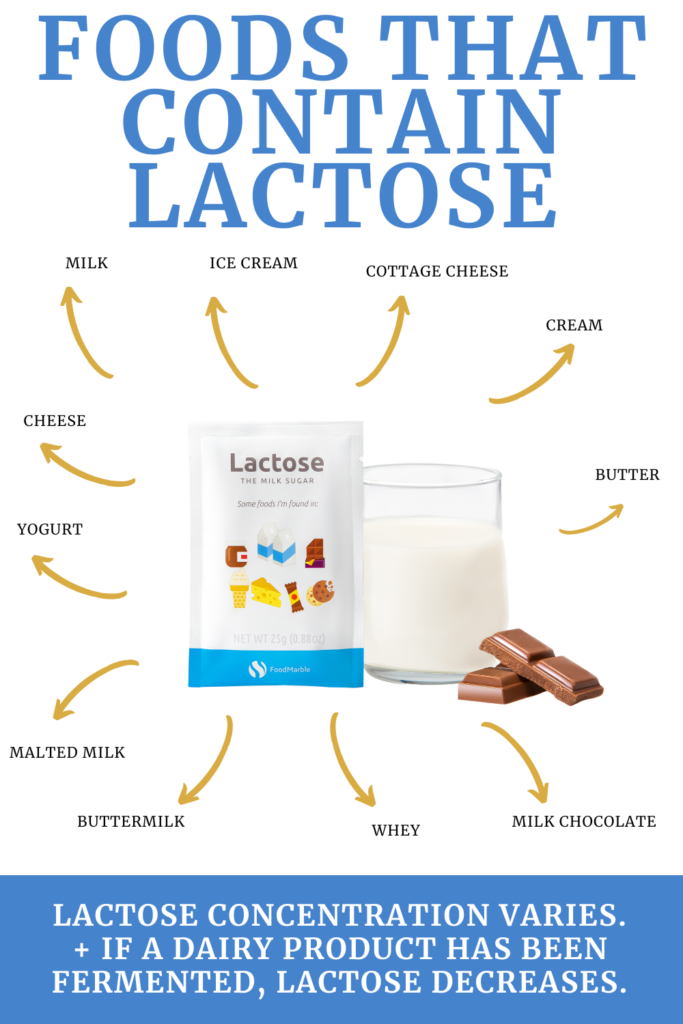
There are two main reasons for this:
- Lactose concentration in dairy products. Here are some examples:
- Cow and goat milks contain 4.5–4.8%.
- Human milk contains about 7%.
- Butter contains only .8 – 1%.
- The fermentation process for that item. If a dairy product has been fermented, lactose decreases.
- After 11 days storage of yogurt the lactose content decreased to about 2.3 g/100 compared to 4.8 g/100 g in nonfermented milk. (SOURCE)
So how can you know if/what you tolerate from a lactose standpoint?
I’ll share my top 2 ways to give you options.
Lactose Fermentation Test
The quickest way is to test for it.
There are a couple ways to do this.
The first is through an actual lactose fermentation test.
If you are able to do this test, you will better understand lactose and digestion on a very personal level.
I’ve talked about it before; never in length.
My partner, FoodMarble, offers this test.
It’s their Lactose Challenge using the FoodMarble AIRE device.
Learn even more about the FoodMarble Lactose Challenge.
- Purchase the FoodMarble AIRE + FODMAP Program HERE (using code GUTSYG you’ll save 15%)
- Prepare for the challenge:
- No eating for 12 hours prior to starting the challenge. If you already practice sane Intermittent Fasting, this is no different than your normal routine.
- Your last meal prior to testing should be low FODMAP without any alcohol consumed. In case you’re uncertain about this one, here are a couple resources to help:
- Only water during the challenge.
- If you’re currently on antibiotics, wait to do this challenge until at least 2 weeks after.
- Brush your teeth before the challenge and rinse your mouth out with water. Do not exercise or smoke during the challenge or for 1-2 hours beforehand.
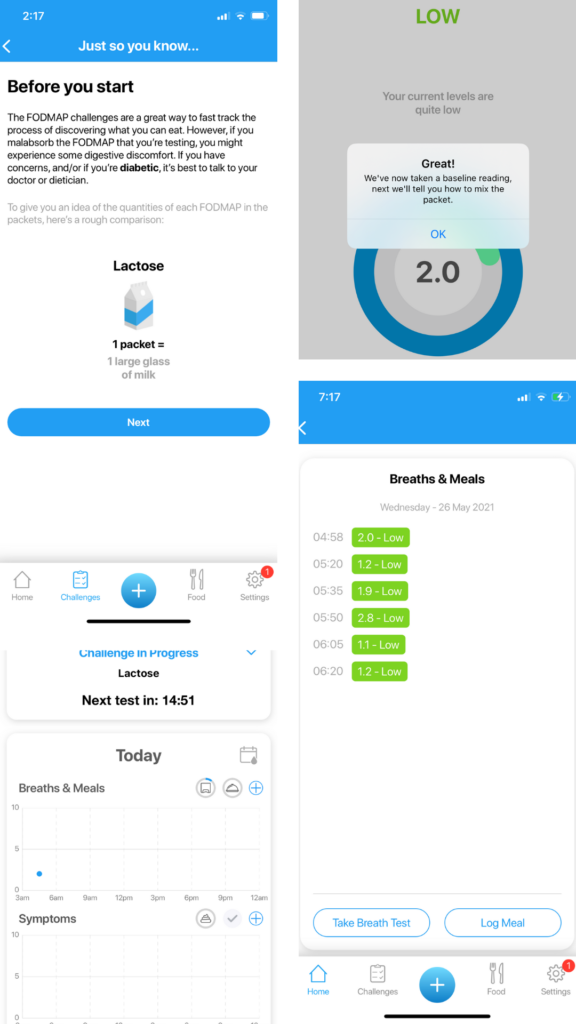
Here is exactly how I did it:
- I ate my last meal and finished around 5pm. The meal consisted of: jade pearl rice (our favorite rice from Lotus Foods) + green beans + olive oil + feta cheese. And yes, that’s all low-FODMAP.
- The next morning, I started the breath test a little after 5am.
- I boiled my water (per the instructions, which are given via the app; step-by-step), poured it into a mug, emptied the Lactose packet contents into the water, stirred completely, and finally topped off with a little cool water.
- I drank the combination in about a minute.
- Then, the testing began.
I took my breath tests, which were prompted by the app (plus my apple watch vibrated, too!) every 15 minutes for the 3 hours.
It’s super easy, in fact, it’s easier than the SIBO breath test.
I personally had no symptoms (as of yet anyways) upon drinking the solution and taking the challenge.
And my levels stayed low throughout.
I have worked really hard to arrive here, though.
If I’m to be perfectly honest, though I don’t have massive GI symptoms with lactose any longer (as long as I don’t consume a ton in one sitting – ahem, a big old blizzard!), I still think dairy affects my skin.
It’s something I’m still watching and tracking via my journal.

You can be as detailed as you want through the app.
As you can see, I recorded my sleep and stress, but that’s it.
You can log meals, track symptoms, take notes, record your breath throughout the day after regular meals, etc.
In other words, the app is super comprehensive!
But let’s say you don’t want to or can’t spend the extra for the device and challenge right now.
Well, I’m still wanting to help!
You can do a lactose elimination challenge.
Lactose Elimination Challenge
The slower way to test your lactose (in)tolerance is to do a specific lactose-elimination diet and keep your gut-healing journal near, tight and tidy.
Taking all of the above information into consideration, here is how I might perform this test.
- Have a copy of your 90-day gut healing journal. The journal key that I keep and provide will help immensely with this challenge. And you don’t even have to get the fancy, printed version. You can get the instant PDF journal to download HERE (exact same information, but you just download and print it yourself).
- Cut all lactose for 21 days. This one is going to be very tricky because you’ll need to understand all that is lactose. If you need some help getting started, see my resource below for 100 Dairy Sources and Alternate Names. Make note: if you can work with a health practitioner during these 21 days and on this step in particular, it will greatly help.
- During those 21 days, you’ll need to record what you are eating. You need to ensure you are recording ingredients vs ingredient(s). And you must make sure you’re properly recording symptoms (remember, the journal key via my 90-day gut healing journal will guide you!), bowel movements, etc.
- On day 22, begin your reintroduction. Here are my tips for doing this:
- Read How to Reintroduce Foods After an Elimination Diet.
- The key is “add slow and go.”
- Per the above, the first thing I’d add in would be butter, since it contains a very low amount of lactose. Enjoy a serving, then wait at least 72 hours to see if any symptoms arise. Record them.
- Then, if successful, add in something else with just a hint more lactose in it than the butter. Alternatively, you could try two servings of butter.
- Rinse and repeat to find your perfect amount of lactose that you can personally tolerate.
Choose Your Lactose Challenge Method
This method is simply a reverse engineer of the instant lactose test from FoodMarble above.
Alright, I’d love to hear your thoughts on lactose and tolerating it.
Have you ever done either of the tests above? Questions? Leave them for me in the comments below.
If you liked this post, you might also enjoy:
- Hydrogen Breath Test at Home
- FoodMarble Breath Test {with Aonghus Shortt}
- 100 Dairy Sources and Alternate Names
Xox,
SKH
🤰 bloating be gone! weight loss through optimal gut health for women
💃ʜᴇᴀʟ ʏᴏᴜʀ ɢᴜᴛ. ʜᴇᴀʟ ʏᴏᴜʀ ʟɪfe.
🫶🏻 founder gutbyome.com


![Vision Board Ideas [How to Make a Mini Vision Board]](https://agutsygirl.com/wp-content/uploads/2020/11/woman-vision-board-desk-featured-agutsygirl.com_.png)
